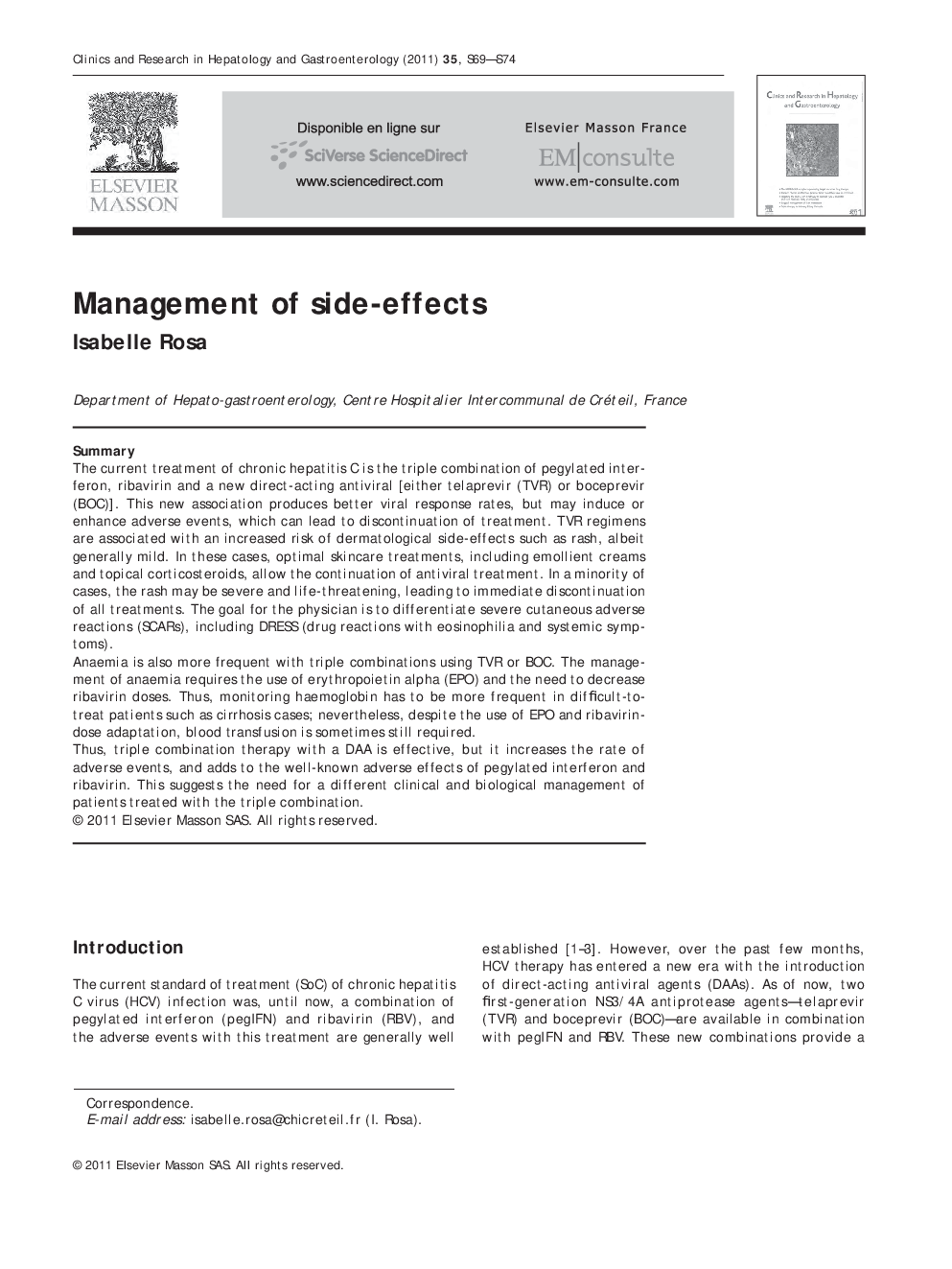| Article ID | Journal | Published Year | Pages | File Type |
|---|---|---|---|---|
| 3286972 | Clinics and Research in Hepatology and Gastroenterology | 2011 | 6 Pages |
SummaryThe current treatment of chronic hepatitis C is the triple combination of pegylated interferon, ribavirin and a new direct-acting antiviral [either telaprevir (TVR) or boceprevir (BOC)]. This new association produces better viral response rates, but may induce or enhance adverse events, which can lead to discontinuation of treatment. TVR regimens are associated with an increased risk of dermatological side-effects such as rash, albeit generally mild. In these cases, optimal skincare treatments, including emollient creams and topical corticosteroids, allow the continuation of antiviral treatment. In a minority of cases, the rash may be severe and life-threatening, leading to immediate discontinuation of all treatments. The goal for the physician is to differentiate severe cutaneous adverse reactions (SCARs), including DRESS (drug reactions with eosinophilia and systemic symptoms).Anaemia is also more frequent with triple combinations using TVR or BOC. The management of anaemia requires the use of erythropoietin alpha (EPO) and the need to decrease ribavirin doses. Thus, monitoring haemoglobin has to be more frequent in difficult-totreat patients such as cirrhosis cases; nevertheless, despite the use of EPO and ribavirindose adaptation, blood transfusion is sometimes still required. Thus, triple combination therapy with a DAA is effective, but it increases the rate of adverse events, and adds to the well-known adverse effects of pegylated interferon and ribavirin. This suggests the need for a different clinical and biological management of patients treated with the triple combination.
